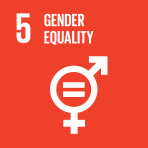Trends in different family structures, by type of household and stage of the family life cycle

- Author: United Nations
- Main Title: Social Panorama of Latin America 2004 , pp 196-204
- Publication Date: January 2006
- DOI: https://doi.org/10.18356/039c540a-en
- Language: English
Latin American families living in urban areas are becoming increasingly diverse as a result of differences between countries in terms of their current phase of demographic transition and level of development. In just over a decade, one–person households and households headed by women have increased substantially, while the proportion of nuclear families and two–parent families has declined. Even though the nuclear family is still the predominant structure, the traditional family model–consisting of a father–breadwinner, a mother–housewife and their children– no longer represents the majority of households and families in Latin America, since it accounts for only 36% of the total. In addition, there has been an increase in the number of families at the stages of the family life cycle where children leave home or where the family consists of older persons without children. In 2002 most families were at the expansion and consolidation stages, at which childbearing has been completed and all the children are still living in their household of origin.
-
From This Site
/content/books/9789211558586s011-c003dcterms_title,dcterms_subject,pub_keyword-contentType:Journal -contentType:Contributor -contentType:Concept -contentType:Institution105



